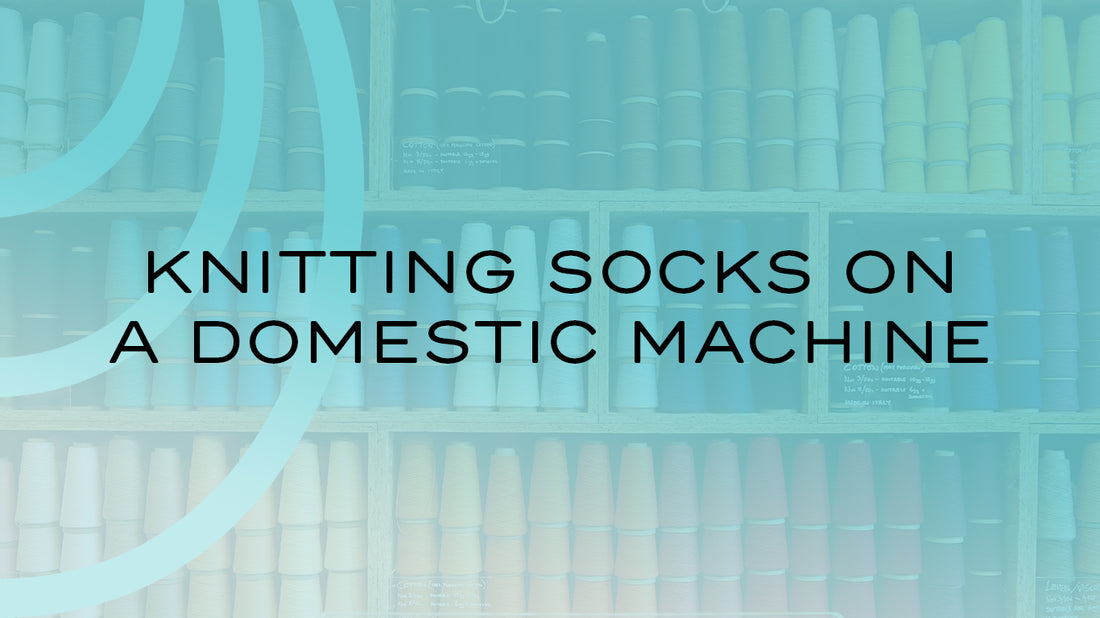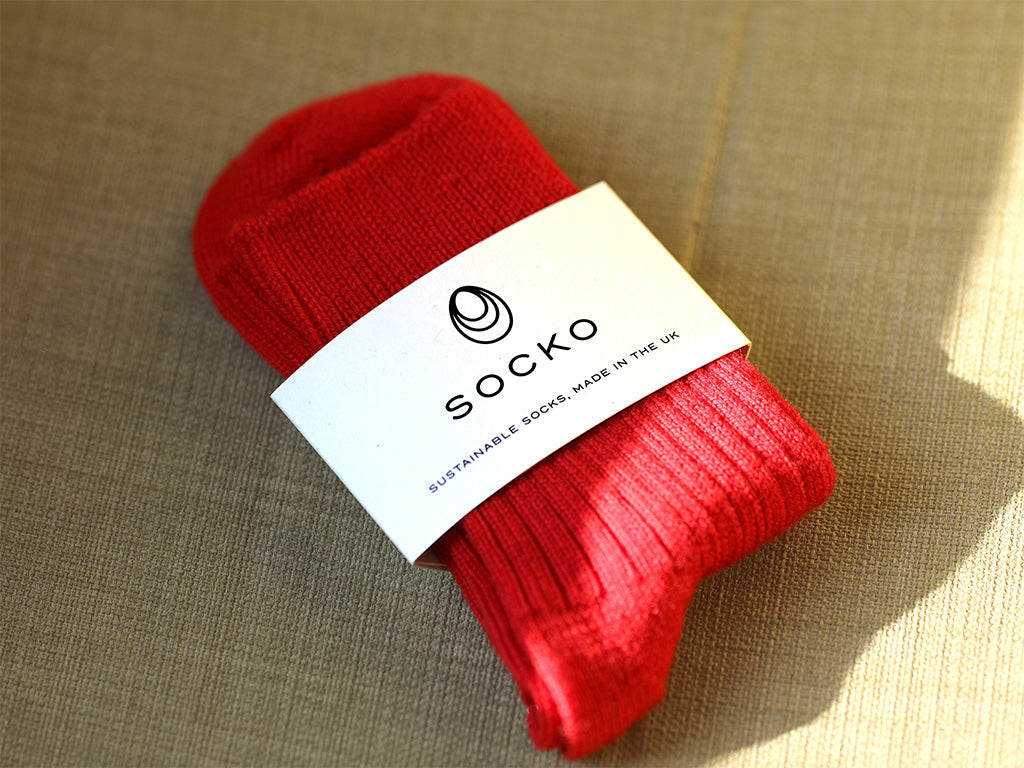
Knitting socks on a domestic knitting machine
Share
Engaging with wool craft tends to take an understandable dip in the summer months so I was as surprised as you may be to find myself on my way to Bethnal Green in 30º heat to learn how to knit seamed socks on a single-bed knitting machine.

The class took place at Knit Works London, the creative workshop of Timothy Andrews. My last visit had been to use their cone winder, which was when Tim had mentioned that they run accessories classes that include a sock making class. Having recently revived my Brother machine thanks to the power of YouTube and knowing how to hand knit and industrially knit socks, this was the missing piece to my sock-knit-know-how an opportunity I couldn’t let slide. The Achilles heel if you will…

The space is really inspiring; filled with a mix of domestic and industrial machines, with walls of cones of beautiful yarns and a pin board of samples to compliment the font of knowledge that is Tim himself. Tim teaches across several UAL colleges and as with the best teachers he has both industry experience and his own practice/business. His patience and attention to detail are all you could hope for in a teacher. As well as learning how to make seamed socks, I picked up some handy tricks of the trade too.

After I unceremoniously spilled the tea (literally) using an overzealous swipe of the carriage, we got down to work. The first step, as should be the case with any knitted garment, was to make a swatch out of the two colours I’d picked in order to set the gauge and knit a sock that fits like a glove. This was also a useful refresher on the basics of machine knitting and a chance to understand the subtleties of the key components of the sock. Namely, the heel and the toe, made using half the stitches you’ve cast on and working a series of decrease rows followed by increase rows.

Weight placement was key here so that the stitches don’t bounce back [and a reminder to go hunting for some more weights on eBay]. The main challenge is keeping track of where you are in the decrease/increase and remembering to wrap the thread under the increasing needle to avoid creating eyelets (small holes) along the edges of the heel/toe.

The next step that Tim showed us was how to create a rib on a single-bed machine without a ribber. This involves the unnerving process of unravelling every other stitch right back to the cast on row and then using a latch tool to pick it up and re-work it facing the right direction. Time consuming yet pretty meditative once you get into the swing of it. Having tried since with a crochet hook, I can say that the latch tool is the best way to approach this particular task.

Once we had calculated the correct number of stitches and rows needed from our swatch, the actual knitting of the sock itself was pretty speedy. It was then time to seam the toe and side. Thanks to a few days learning linking with Socko’s manufacturers I got a nice clean edge to the toe seam and then went on to line up the side edges to create the finished sock! After we’d each modelled our woollen wares, it was time to head back into the muggy London heat. A great afternoon and a new skill under my belt.
If you’re London-based and interested in machine knitting, Knit Works London teach everything from beginners through to advanced. Drop Tim a line.


: invalid url input -->)
1 comment
Hi Tim I didn’t know you could use a home knitting machine to knit socks, good for you I am amazed. I am in the USA, thanks for info. Rita Duffy